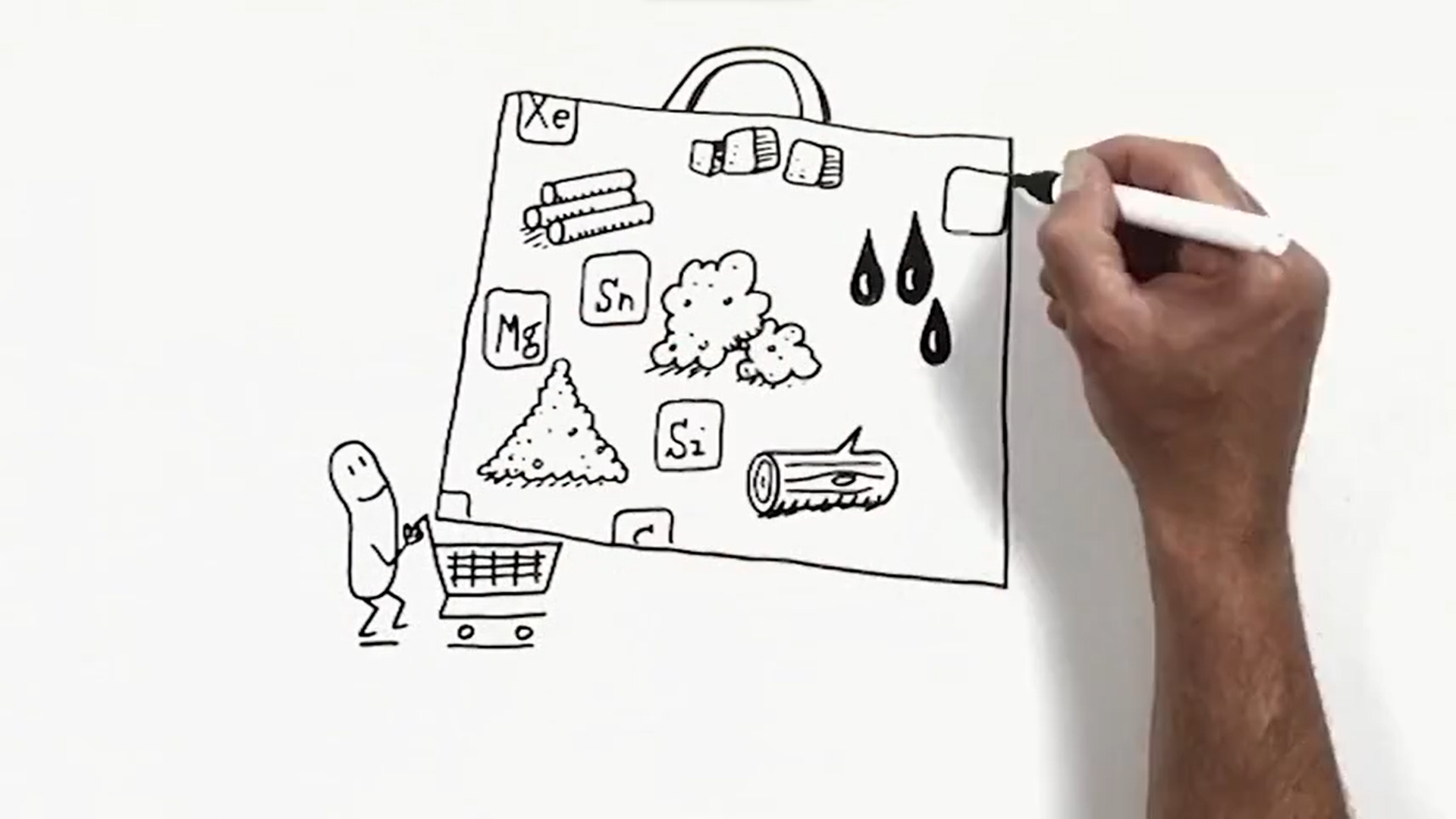Circular Economy
Text adapted and shortened from the European Parliament (2023):[1]
Circular economy is a model of production and consumption based on three key aspects:[2]
- design out waste and pollution
- keep in use products and materials
- regenerate natural systems
This involves sharing, leasing, reusing, repairing, refurbishing and recycling existing materials and products as long as possible. In this way, the life cycle of products is extended. When a product reaches the end of its life, its materials are reused within the economy wherever possible and waste is reduced to a minimum by recycling. This is a departure from the traditional, linear economic model, which is based on a take-make-consume-dispose pattern of extracting natural raw materials. The latter model relies on large quantities of cheap, easily accessible materials and energy and the maximising of profits.
The following graphic illustrates the differences between the traditional economic model, the interim model of reusing materials and the approach of circular economy:

Reusing and recycling products slows down the use of natural resources, reduces the disruption of the habitat and helps to limit the loss of biodiversity. Another benefit from circular economy is a reduction in total annual greenhouse emissions, as according to the European Environment Agency industrial processes and product use are responsible for 9.1% of the EU’s greenhouse gas emissions. Also creating more efficient and sustainable products helps to reduce energy and resource consumption. It is estimated that more than 80% of a product's environmental impact is determined during the design phase.
The world's population is growing and with it the demand for raw materials. However, the supply of crucial raw materials is limited. Finite supplies also mean some EU countries are dependent on other countries for their raw materials. Recycling raw materials mitigates the risks associated with supply, such as price volatility, availability and import dependency. This applies, for instance, to critical raw materials, needed for the production of technologies that are crucial for achieving climate goals, such as batteries and electric engines.


European Parliament - Multimedia Centre (2018, April 9)
Time to watch 1m13s

Further reading:
European Parliament (2023).
Circular economy: definition, importance and benefits.
What steps are being taken in the EU to promote circular economy? What role do finite resources extracted through mining play in this?
Time to complete approx. 30 min.

Further reading:
Sieger, Johannes / Lottermoser, Bernd G. (2024).
Chapter 4: Mining in a circular economy.
In Lottermoser, Bernd G. / Sieger, Johannes /Tost, Michael (Ed.),
Mixed Reality Handbooks for Mining Engineers – Volume 1. Part I – Sustainability in Mining. Part II – Mine Planning. (pp. 107-117). Leykam.
What does circular economy have to do with mining?
There is little doubt that resources should be used sustainably. From a circular economy point of view, the focus is on saving and recycling resources and on reducing the rates of new raw materials to a minimum.
Mining is a key industry when it comes to sustainability issues and has a high potential for circular economy: On the one hand, mining professionals are product and service users at the local mine site, e.g. when they are engaging with technical operations and use physical infrastructure or equipment.[3] On the other hand, mines stand at the start of the supply chain for mining products when extracting raw materials and are thus part of the upstream flow of the global mining economy.
Concerning the latter, from current estimates the demand for primary materials is likely to increase at least two-fold over the next few decades until 2060.[4][5][6] This is not least due to a higher demand from technologies important for the green transition.[7][8] Currently most raw material is still gained from primary sources on mining sites (also termed virgin mining). An alternative is to generate raw material from recycling (urban) waste (urban mining). However, while in the mid- to long-term it may be possible to regain more raw material from recycling, for many raw materials this technology is still not fully developed and there is limited availability of secondary material.[9] Furthermore, partly industries consider recycling more cost intensive than the extraction of raw materials.[10][11]
McCarney et al. (2021)[12] hold that circular economy should rather integrate the issues of upstream supply chain of mining products instead of predominately focusing on the processing industries and consumers of mining products. In fact, this shift in focus may provide “incentives for primary producers” to include circular economy approaches more into their mining drilling and extraction activities but also in their product and service use.
However, it is important to ensure that continuing to extract raw materials does not mean to “do business as usual”. Instead, from a sustainability perspective, their extraction should become limited to the cases where it is necessary, i.e. that there is no better way to advance the reduction of emissions or to achieve other goals of sustainability. In fact, raw materials from secondary material are so far insufficiently available to enable the widespread development of renewable energies (Hund et al 2020:7).[13] Here, raw materials from primary resources may be the only viable source. A current prominent example is lithium for batteries to store energy from solar panels or wind turbines.
Proponents of a shift from traditional linear economy may regard circular economy as “as a pragmatic stepping-stone” for economic activities to contribute “to reach[ing] the Doughnut Model”. This model may be described as a holistic interplay of environmental and social thresholds viable for a contemporary and future sustainability of the world we live in.[14][15]
- ↑ European Parliament (2023) Eu23a
- ↑ llen MacArthur Foundation (2024) El24
- ↑ Krause, Stefanie / Kretschmann, Jürgen (2023) Kr23, p. 574
- ↑ Cf. McCarney (2021) Mc21, p. 3
- ↑ ICMM (2023) IC23, p. 1
- ↑ Aramendia, Emmanuel et al. (2023) Ar23, p. 1
- ↑ Krause, Stefanie / Kretschmann, Jürgen (2023) Kr23, p. 574
- ↑ Cf. McCarney (2021) Mc21, p. 17
- ↑ Zeng et al. (2023)
- ↑ Cf. McCarney (2021) Mc21, p. 19, 29
- ↑ While this may be true for certain raw materials, according to a recent study, recycling of copper and aluminium is less costly than extracting raw materials [Zeng et al. (2023) .
- ↑ McCarney (2021) Mc21, p. 22
- ↑ Hund et al. (2023) Hu23, p. 7
- ↑ TEK Refresh (2021) TE21
- ↑ Cf. Jonstrup (2023) Jo23
Bernd G. Lottermoser /
Matthias Schmidt (Ed.)
with contributions of
Anna S. Hüncke, Nina Küpper and Sören E. Schuster
Publisher: UVG-Verlag
Year of first publication: 2024 (Work In Progress)
ISBN: 978-3-948709-26-6
Licence: Ethics in Mining Copyright © 2024 by Bernd G. Lottermoser/Matthias Schmidt is licensed under Attribution-ShareAlike 4.0 International Deed, except where otherwise noted.


Further Informationen:
Project "Ethics in Mining"